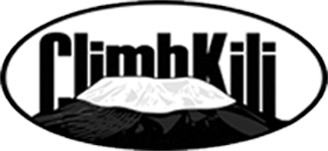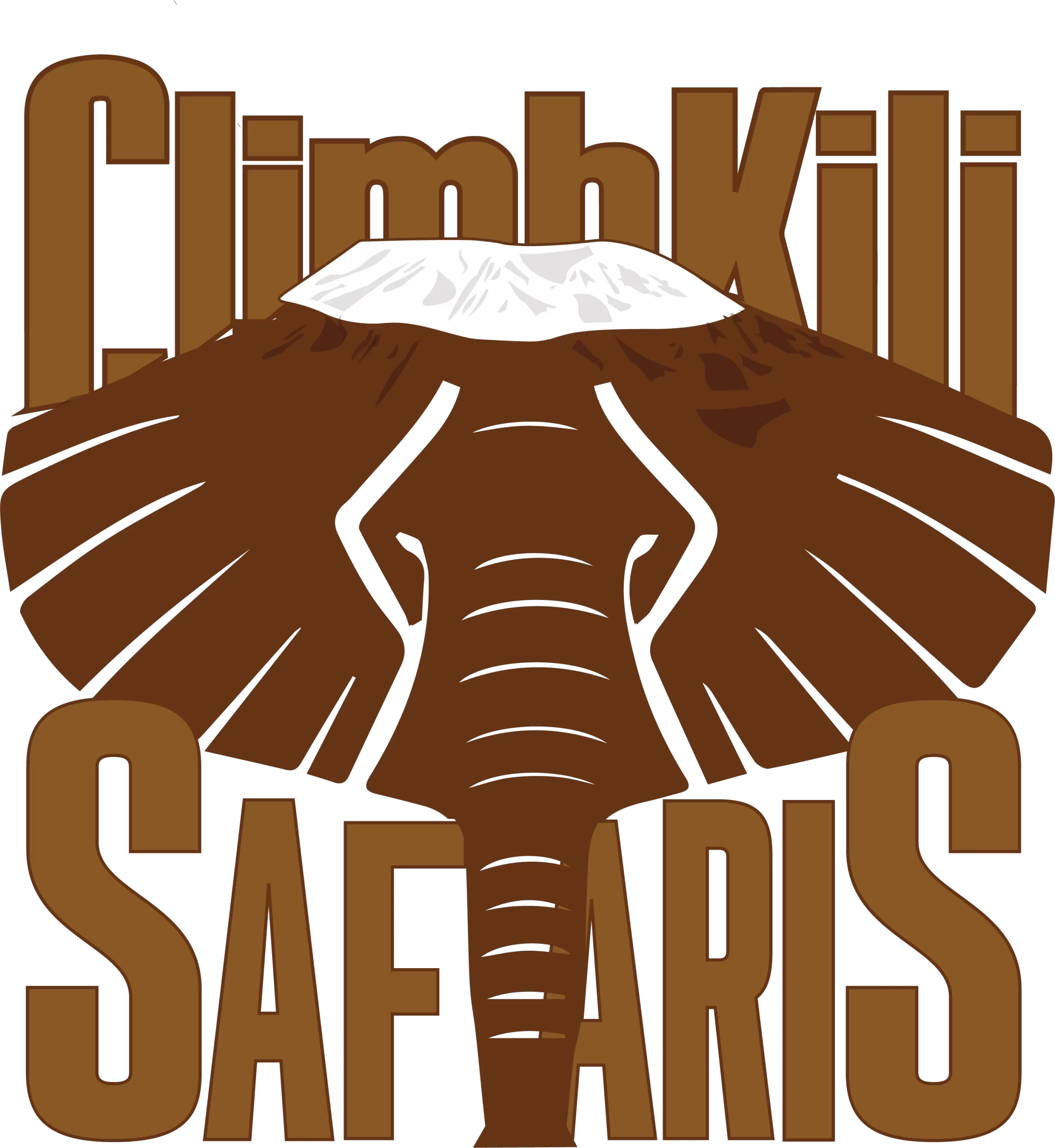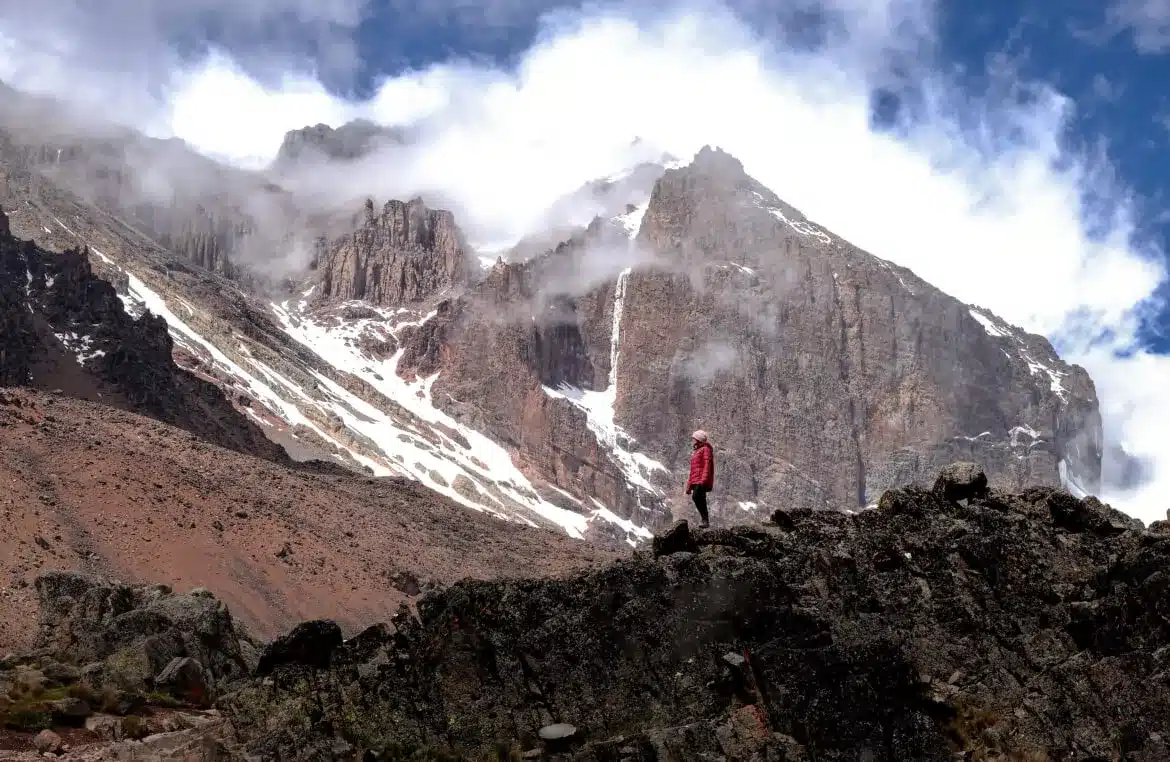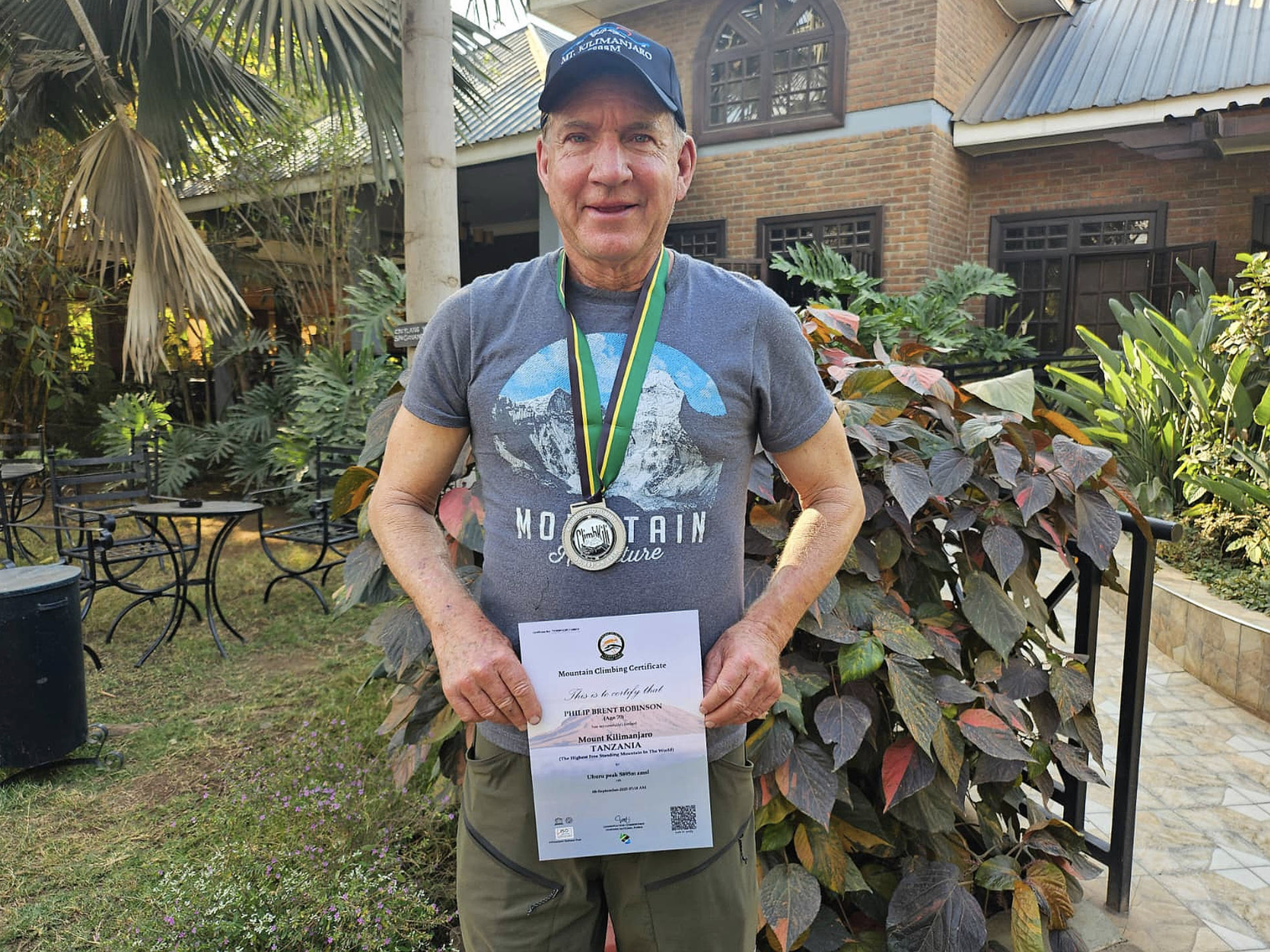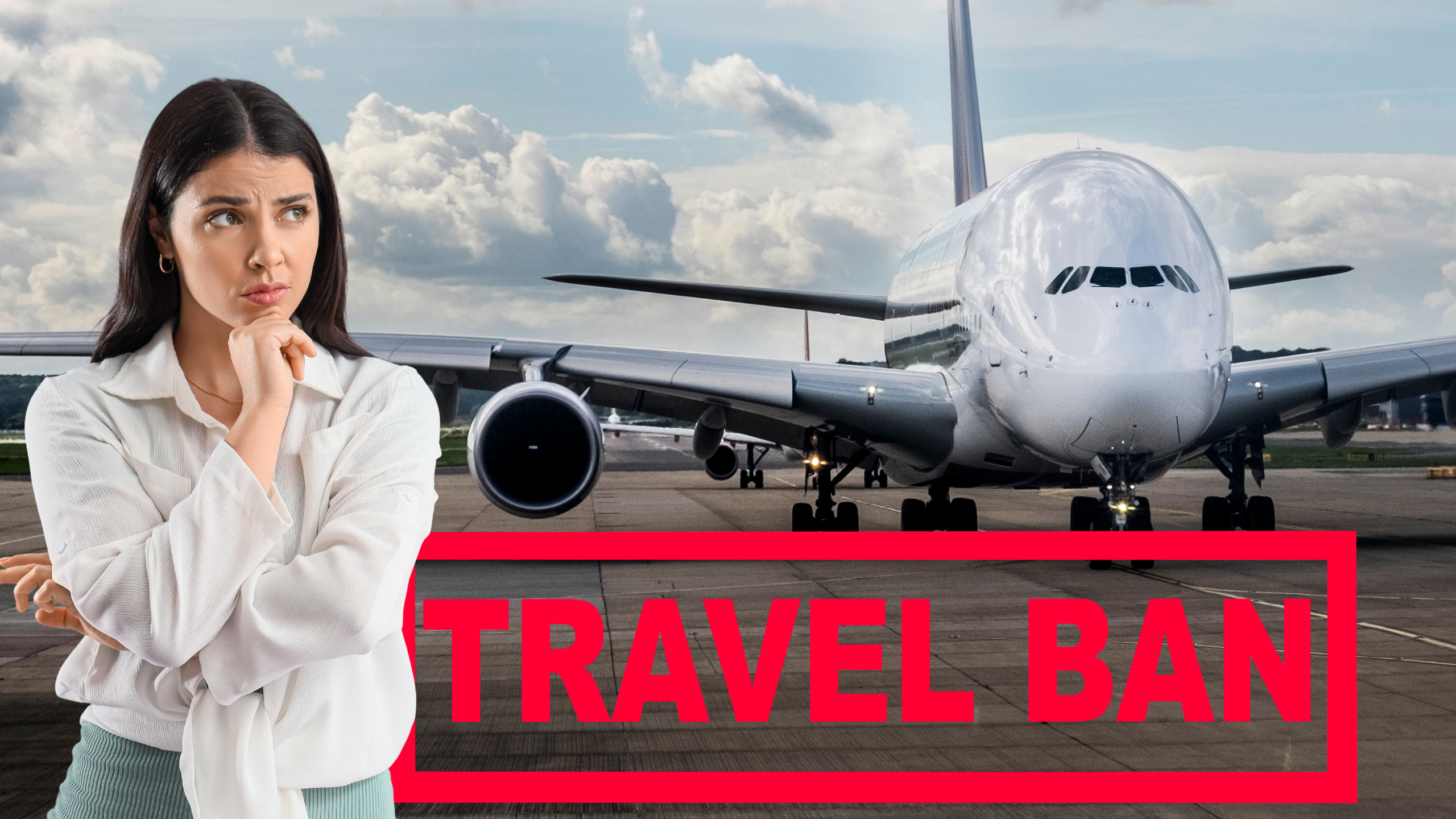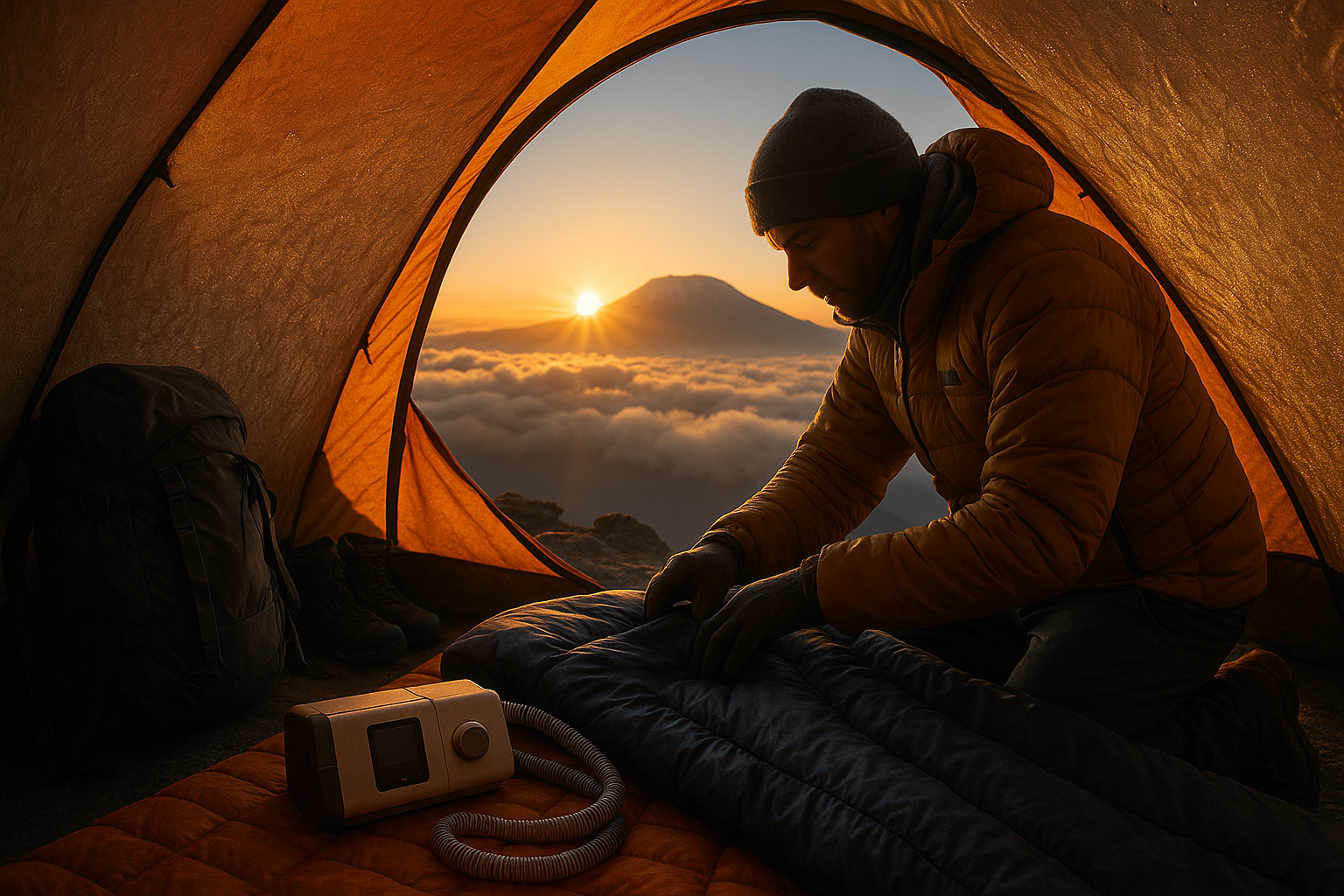Through a Hiker’s Eyes: My Machame Route Journey with Climb Kili
The chill of the early morning air bit at my cheeks as I unzipped my tent. In the distance, Mount Kilimanjaro’s snowcapped summit glowed faintly in the first light of dawn. Steam curled from my mug of tea, brought by Baltazar, our ever-smiling waiter, and I thought, This is really happening.
Months of training hikes, gear lists, and endless research had led to this moment. But as I would learn, no amount of preparation could match the reality of Kilimanjaro—its landscapes, its people, and the deep sense of connection that comes from taking on something this big.
Full Blog here: SUMMITING MOUNT KILIMANJARO, MACHAME ROUTE: EVERYTHING YOU NEED TO KNOW FOR AN EPIC EXPERIENCE UP AFRICA’S HIGHEST MOUNTAIN
The Mountain’s Many Worlds
Over the next six days, I would walk through five distinct climate zones, each more breathtaking than the last:
- Cultivation Zone – Terraced farms at the base, alive with the daily rhythms of Tanzanian life.
- Rainforest Zone – Dense, green, echoing with bird calls and monkey chatter.
- Moorland Zone – Alien landscapes with giant lobelias and heathers.
- Alpine Desert Zone – Stark, silent, and wind-scoured.
- Arctic Zone – A glacier-capped summit where the air is thin and the horizon endless.
This transformation, step by step, felt like traveling through different worlds in less than a week.
Why I Chose Climb Kili
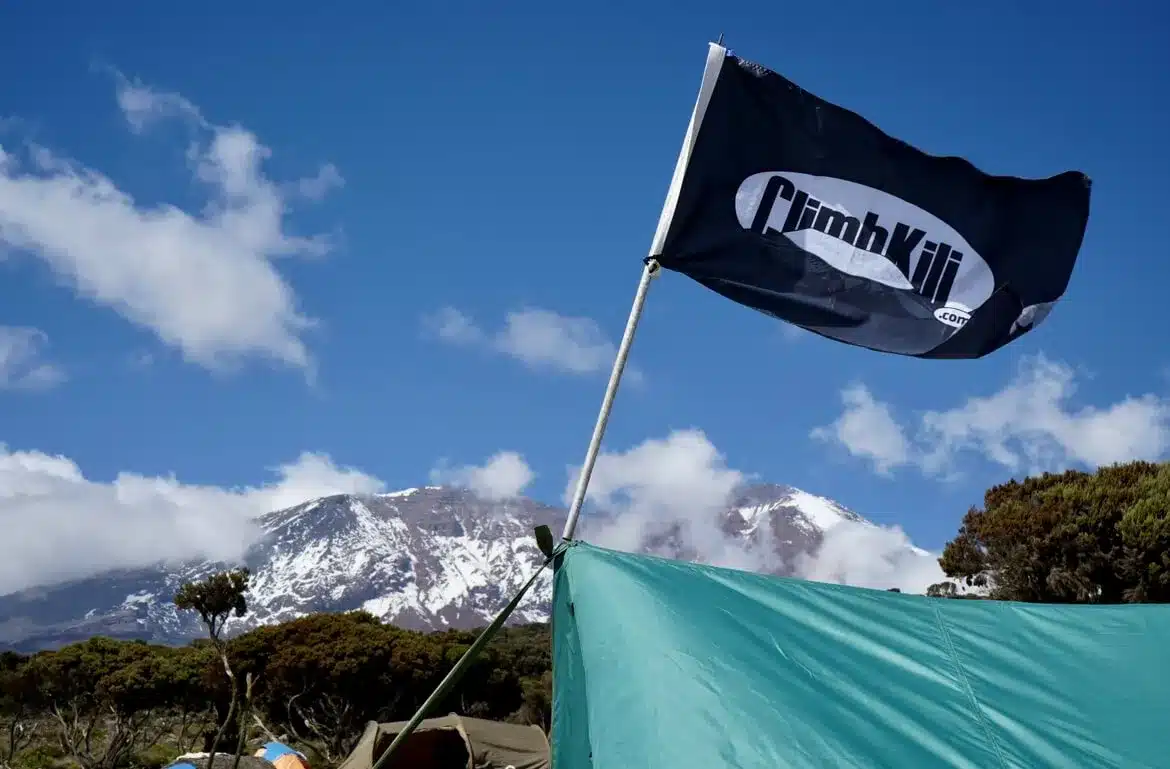
After combing through countless operators, three things set Climb Kili apart:
- 98% summit success rate—real proof of experience and preparation.
- Small group sizes (max 6 climbers)—more personal attention, safer pace, and no crowded trails.
- Ethical and community-focused—fair treatment of porters, education funding, Water for Life programs, and strict Leave No Trace principles.
From my first email to the final handshake at the gate, I felt supported and valued.
The 6-Day Machame Route Experience
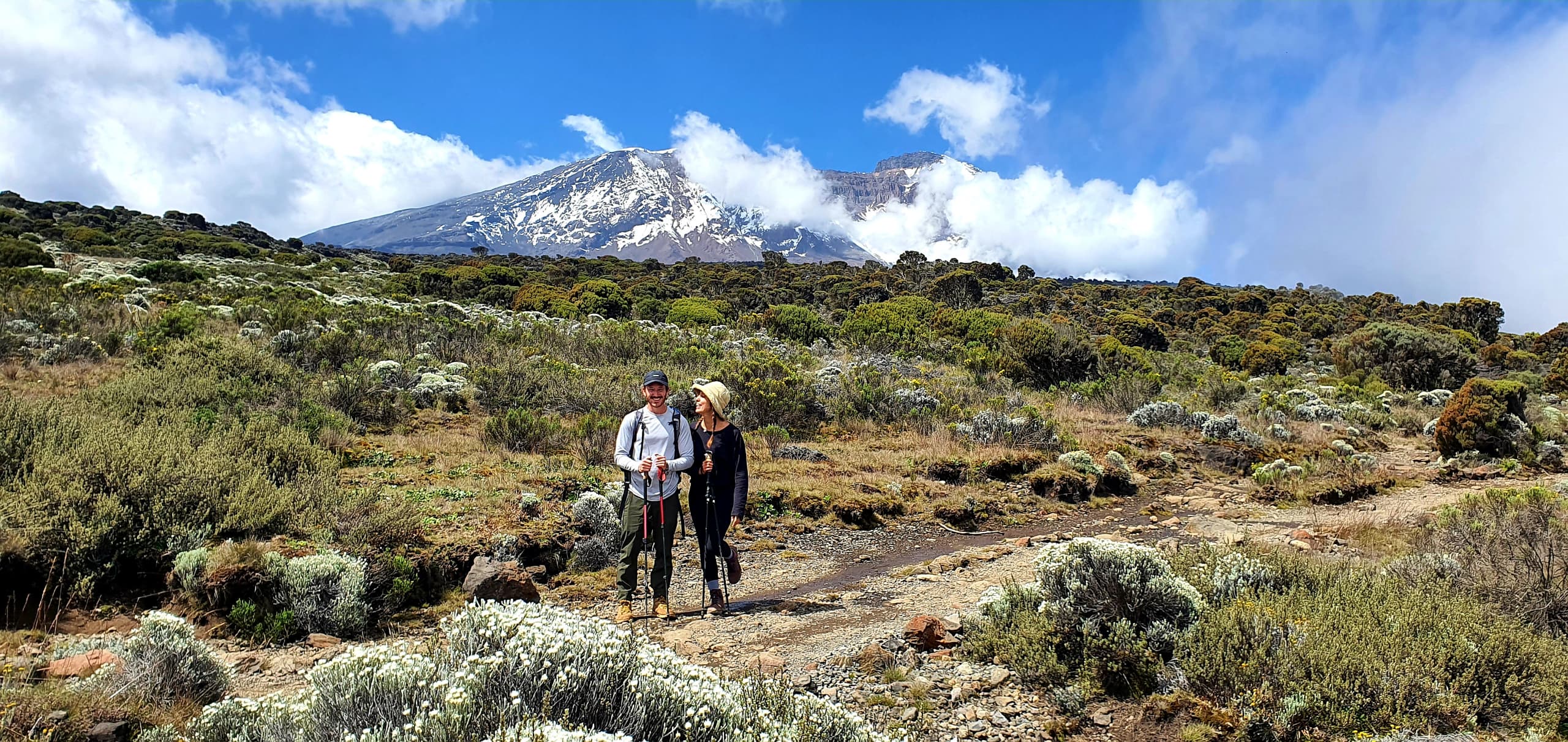
Day 1: Into the Rainforest
Our trek began at Machame Gate with a gradual climb through lush rainforest. The air was cool and damp, with vines draped over ancient trees. Blue Monkeys and Colobus Monkeys appeared in the canopy, curious but unbothered. At Machame Camp, our tents were pitched, dinner was ready, and the distant summit peeked through the clouds.
Day 2: Shira Cave Camp
The trail opened into the moorland zone, dotted with giant heathers. The climb was steady, and the air felt thinner. At Shira Cave Camp, an acclimatization walk led to a rocky viewpoint—my first truly unobstructed view of Kilimanjaro’s glacier-topped peak.
Day 3: High to Low
This was a test of altitude readiness. We climbed into the alpine desert, reaching Lava Tower for lunch in a windswept moonscape. Then came a long descent into the lush Barranco Valley, where towering Senecio plants made it feel like a prehistoric forest.
Day 4: The Barranco Wall
I’d heard stories about the Barranco Wall—and it didn’t disappoint. A hands-and-feet scramble led to one of the most rewarding viewpoints of the entire trek. Crossing the Karanga Valley, we pushed to Barafu Base Camp, where we rested for the summit push.
Day 5: Summit Day
We woke at 11 p.m., headlamps cutting through the dark, and began our pole pole climb toward Uhuru Peak. Snow crunched underfoot, and the horizon slowly lightened until the first golden rays touched the summit sign.
Thick snow blanketed the crater that June morning, turning the summit into a white wonderland. After photos and quiet moments of awe, we descended back to Barafu, rested briefly, then continued to Mweka Camp.
Day 6: Return to the Rainforest
The final stretch was all downhill through the rainforest, the air thick with oxygen again. At Mweka Gate, our guides handed us summit certificates. The celebration began in the van—music, singing, and laughter carrying us back to Arusha.
The People Who Made It Possible
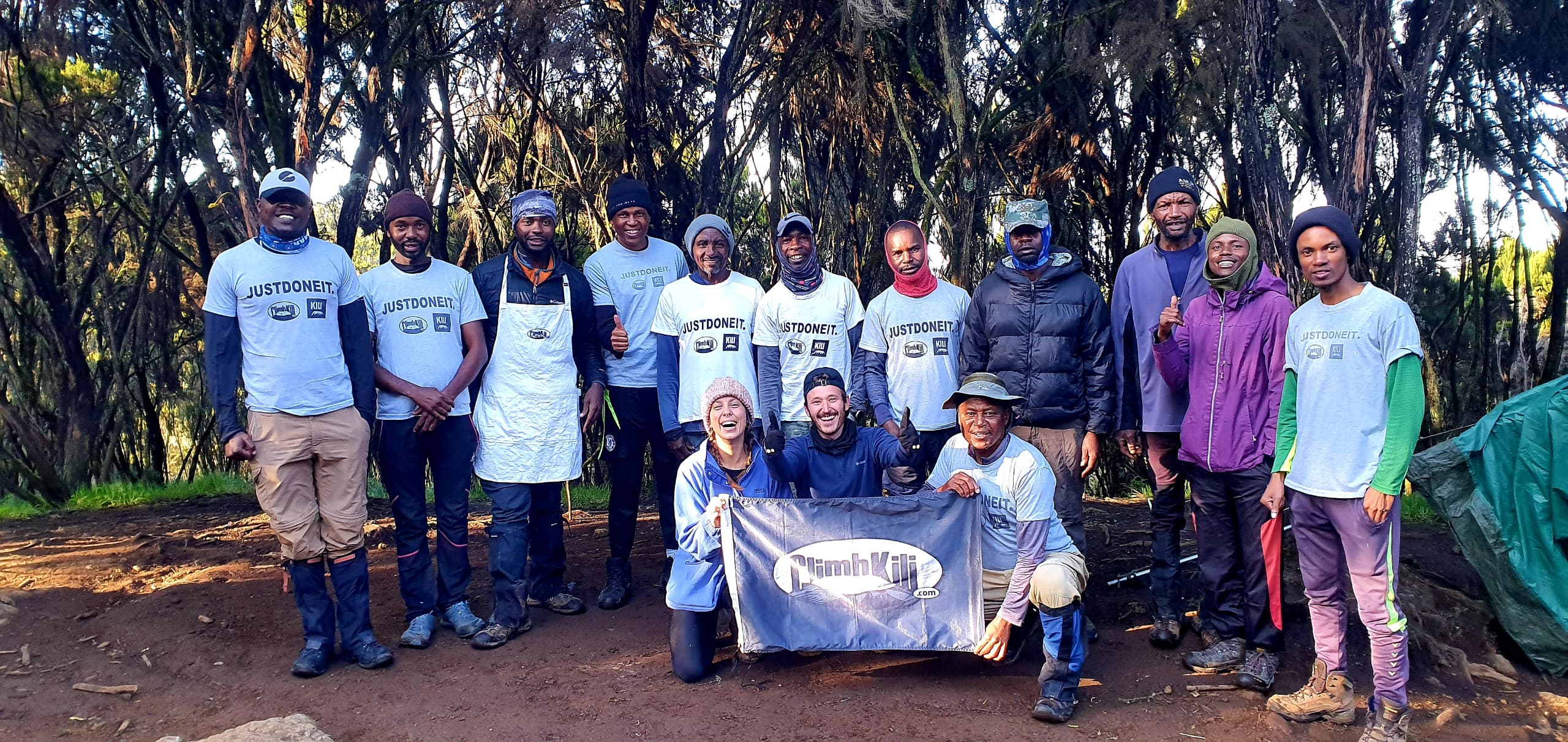
Our 12-person support team was nothing short of extraordinary: head and assistant guides, a cook, porters, and camp attendants. They carried heavy loads, set up camp before we arrived, prepared hot meals, and checked on our health daily.
They didn’t just get us to the top—they made the journey joyful. Singing on the trail, telling stories over dinner, and encouraging us when the climb felt tough.
“We really felt like family for those 6 days. That connection made all the difference.”
Fuel for the Climb
Meals were far beyond what I expected at high altitude:
- Breakfasts of porridge, eggs, pancakes, fruit, and fresh coffee.
- Lunches with soup, pasta, vegetable curries, rice, chicken, and salads—often in epic scenic spots.
- Dinners featuring hearty soups, pizza, spaghetti, and warm bread.
- Snacks of tea, popcorn, and biscuits between meals.
On day three, the porters even set up a tea and coffee break with an unobstructed glacier view—a small luxury I’ll never forget.
Gear & Packing
I brought my own boots, socks, and base layers, but rented high-quality gear from Climb Kili at Summit Safari Lodge in Arusha:
- Insulated parka & sleeping bag
- Fleece layers & rain gear
- Trekking poles
- Extra sleeping pad
Pro Tip: Bring a small pillow. It’s worth every inch of duffle space for a better night’s sleep.
Lessons from the Mountain
- Pole Pole: Move slowly—it’s the best way to acclimatize.
- Hydrate More: Drink more water than feels necessary.
- Reusable Bottles Only: Single-use plastics are banned in the park.
- Generous Tipping: Your crew earns it every single day.
- Mind Over Muscle: A positive attitude is as important as strong legs.
- Leave No Trace: This mountain is sacred—treat it with respect.
Best Time to Climb
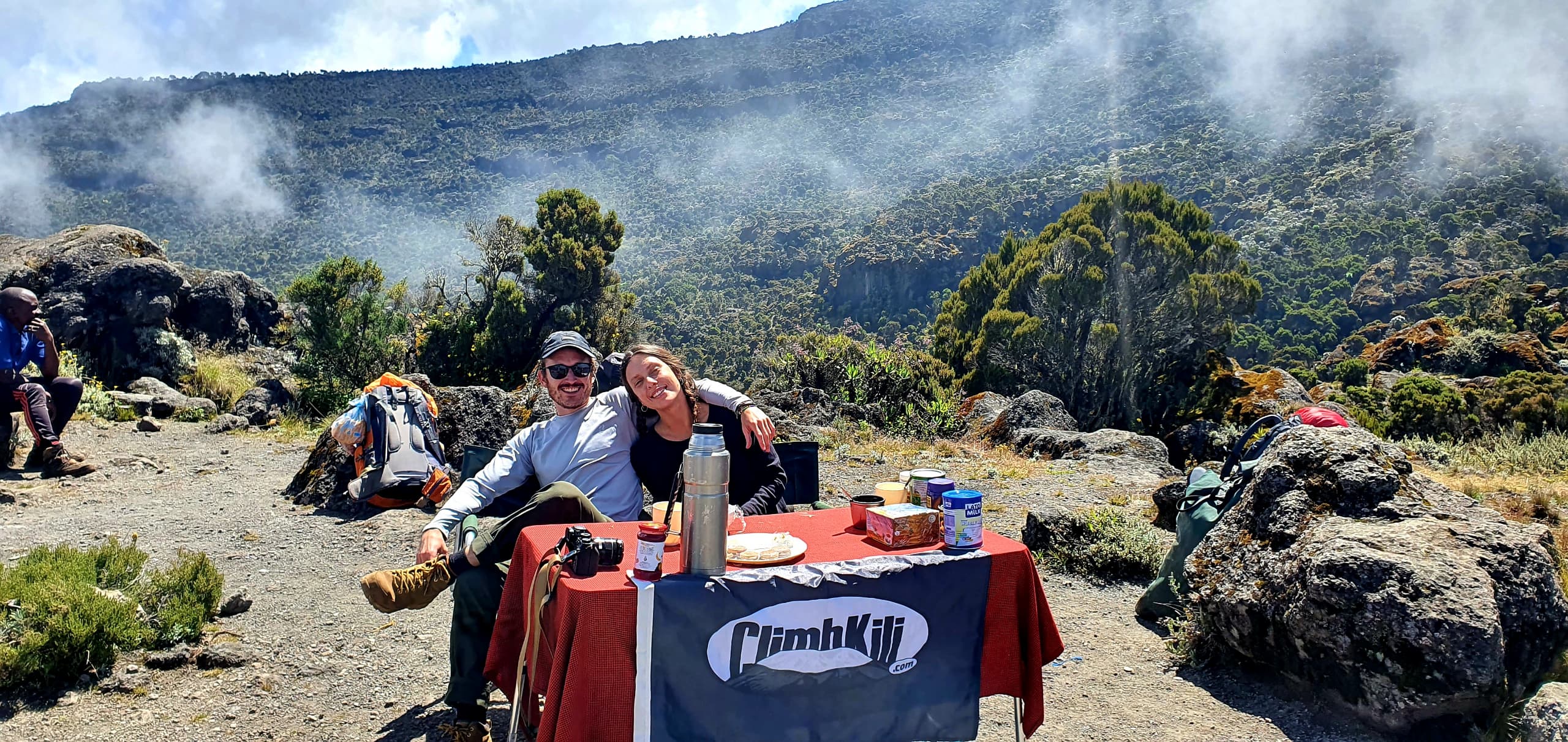
We summited in mid-June, enjoying snow-covered views at the top and minimal crowds. Other excellent climbing windows are July–October and January–March.
Final Reflection
Standing at Uhuru Peak, I realized this climb had been about far more than the summit. It was about trust—in my guides, my team, and myself. It was about walking through landscapes that felt like other planets. And it was about the joy of sharing every step with people who care deeply about your success.
With Climb Kili’s expertise, values, and heart, this wasn’t just a bucket-list check—it was a life-changing journey.
“The people you spend 6, 7, 8 days with on top of a mountain can really make or break your experience. I’m so grateful Climb Kili made mine unforgettable.”
